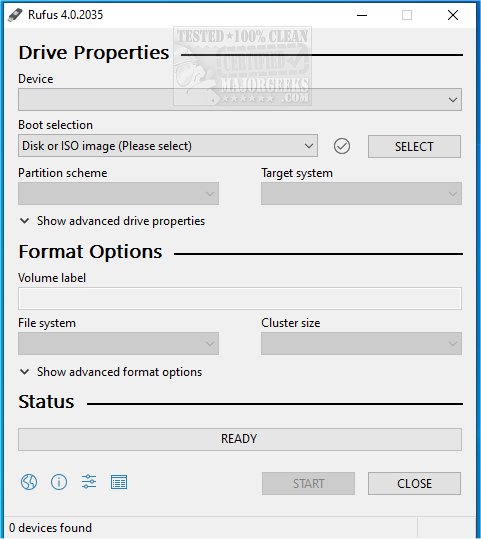Rufus 4.7 has been released, showcasing its utility as an open-source tool designed to efficiently format and create bootable USB flash drives. This versatile software now integrates with Fido, allowing users to download Windows 10 and 8.1 ISO files directly from Microsoft servers, enhancing its functionality. A video guide is available to assist users in navigating the features of Rufus.
Rufus stands out as an essential tool for anyone needing to work with ISO files or set up bootable USB drives. It is favored for several reasons: its speed, simplicity, and compatibility with both BIOS and UEFI systems. Users can create bootable USBs for various operating systems, including Windows and Linux, making OS installations straightforward. Rufus requires no installation, is portable, and is considerably faster than its counterparts. Furthermore, it is completely free and open-source, ensuring a bloat-free experience.
The utility is particularly beneficial in scenarios such as creating installation drives, generating rescue disks for system recovery, and updating firmware or BIOS. Tech support teams and IT professionals find it indispensable for troubleshooting and maintaining multiple machines. However, while Rufus excels in creating bootable USB drives for single operating systems, users looking for a multi-OS setup on one drive might consider alternatives like Ventoy.
Rufus is equipped with various features that enhance the bootable USB creation process. It supports multiple ISO file types, offers persistent storage for Linux users to retain their files, and provides advanced partitioning options. Additional features include Secure Boot and TPM bypass capabilities for installing Windows 11 on unsupported hardware, automatic bad block detection for reliability, and command-line support for automation.
Users should keep a few tips in mind when using Rufus, such as backing up important files before formatting, being aware that it is Windows-only (with no support for Mac), and ensuring the correct partition scheme is selected for compatibility with their systems.
In conclusion, Rufus is highly regarded as one of the best tools for creating bootable USB drives, earning its place on the Ultimate 25 for 2025 list. Its lightweight design, remarkable speed, and extensive features make it a must-have for anyone involved in operating system installations or system recovery tasks. Users are encouraged to download Rufus to streamline their bootable USB creation experience.
Rufus stands out as an essential tool for anyone needing to work with ISO files or set up bootable USB drives. It is favored for several reasons: its speed, simplicity, and compatibility with both BIOS and UEFI systems. Users can create bootable USBs for various operating systems, including Windows and Linux, making OS installations straightforward. Rufus requires no installation, is portable, and is considerably faster than its counterparts. Furthermore, it is completely free and open-source, ensuring a bloat-free experience.
The utility is particularly beneficial in scenarios such as creating installation drives, generating rescue disks for system recovery, and updating firmware or BIOS. Tech support teams and IT professionals find it indispensable for troubleshooting and maintaining multiple machines. However, while Rufus excels in creating bootable USB drives for single operating systems, users looking for a multi-OS setup on one drive might consider alternatives like Ventoy.
Rufus is equipped with various features that enhance the bootable USB creation process. It supports multiple ISO file types, offers persistent storage for Linux users to retain their files, and provides advanced partitioning options. Additional features include Secure Boot and TPM bypass capabilities for installing Windows 11 on unsupported hardware, automatic bad block detection for reliability, and command-line support for automation.
Users should keep a few tips in mind when using Rufus, such as backing up important files before formatting, being aware that it is Windows-only (with no support for Mac), and ensuring the correct partition scheme is selected for compatibility with their systems.
In conclusion, Rufus is highly regarded as one of the best tools for creating bootable USB drives, earning its place on the Ultimate 25 for 2025 list. Its lightweight design, remarkable speed, and extensive features make it a must-have for anyone involved in operating system installations or system recovery tasks. Users are encouraged to download Rufus to streamline their bootable USB creation experience.
Extended Discussion:
As technology continues to evolve, the demand for efficient tools like Rufus will only grow. Potential future updates could include enhanced support for additional operating systems and improved user interfaces that make the process even more intuitive. The rise of cloud computing and virtualization technologies may also influence how tools like Rufus are utilized, possibly leading to features that enable easier integration with cloud-based services. Furthermore, as security becomes an increasingly pressing concern, Rufus may expand its capabilities to include more robust encryption options for USB drives, ensuring that sensitive data remains protected during the installation process. Overall, Rufus remains a pivotal tool in the tech community, with prospects for continued growth and developmentRufus 4.7 released
Rufus is a small Open Source utility that helps quickly format and creates bootable USB flash drives, such as USB keys/pen drives, memory sticks, etc. Rufus is now integrated with Fido to download Windows 10 and 8.1 ISOs from Microsoft servers. Video guide available.


